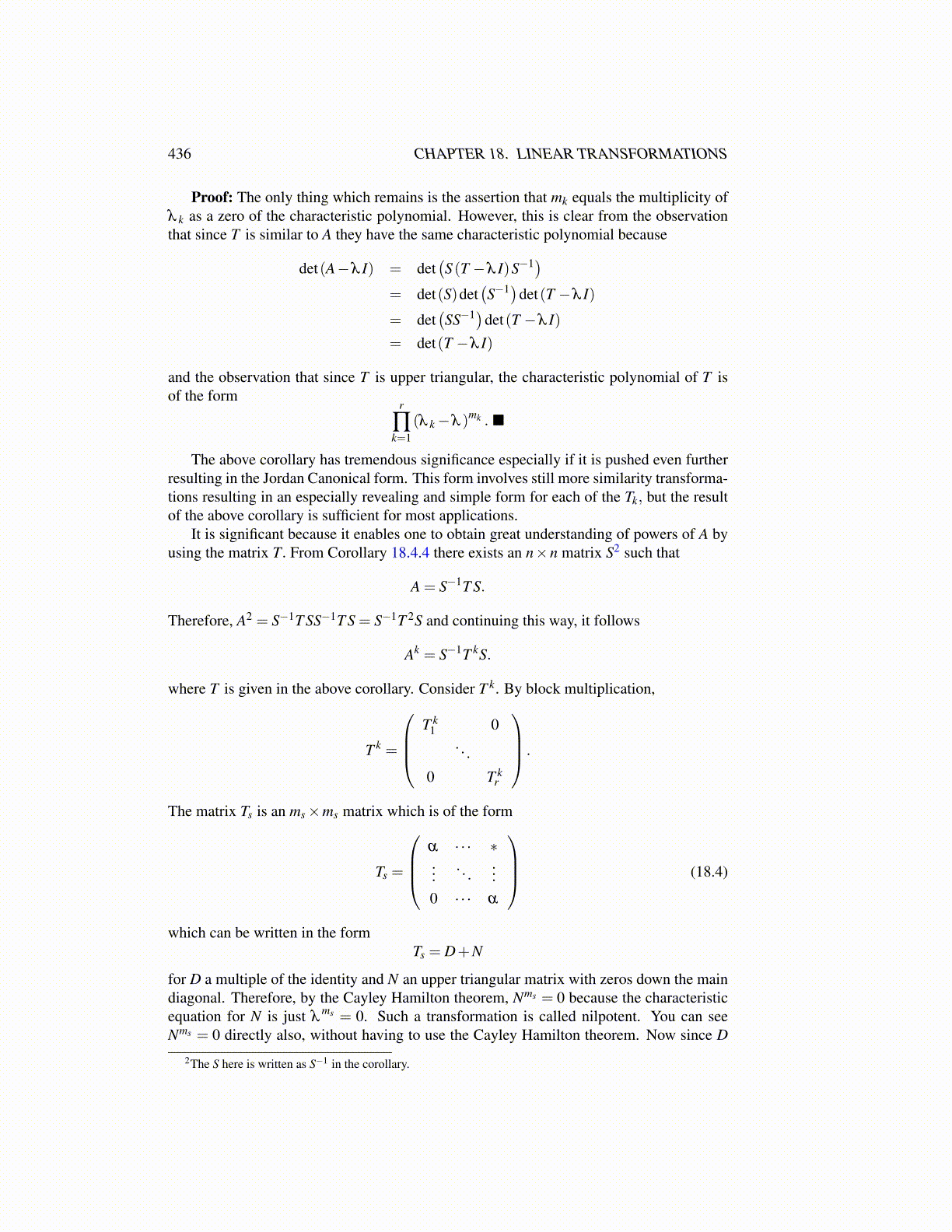
436 CHAPTER 18. LINEAR TRANSFORMATIONS
Proof: The only thing which remains is the assertion that mk equals the multiplicity ofλ k as a zero of the characteristic polynomial. However, this is clear from the observationthat since T is similar to A they have the same characteristic polynomial because
det(A−λ I) = det(S (T −λ I)S−1)
= det(S)det(S−1)det(T −λ I)
= det(SS−1)det(T −λ I)
= det(T −λ I)
and the observation that since T is upper triangular, the characteristic polynomial of T isof the form
r
∏k=1
(λ k−λ )mk . ■
The above corollary has tremendous significance especially if it is pushed even furtherresulting in the Jordan Canonical form. This form involves still more similarity transforma-tions resulting in an especially revealing and simple form for each of the Tk, but the resultof the above corollary is sufficient for most applications.
It is significant because it enables one to obtain great understanding of powers of A byusing the matrix T. From Corollary 18.4.4 there exists an n×n matrix S2 such that
A = S−1T S.
Therefore, A2 = S−1T SS−1T S = S−1T 2S and continuing this way, it follows
Ak = S−1T kS.
where T is given in the above corollary. Consider T k. By block multiplication,
T k =
T k
1 0. . .
0 T kr
.
The matrix Ts is an ms×ms matrix which is of the form
Ts =
α · · · ∗...
. . ....
0 · · · α
(18.4)
which can be written in the formTs = D+N
for D a multiple of the identity and N an upper triangular matrix with zeros down the maindiagonal. Therefore, by the Cayley Hamilton theorem, Nms = 0 because the characteristicequation for N is just λ
ms = 0. Such a transformation is called nilpotent. You can seeNms = 0 directly also, without having to use the Cayley Hamilton theorem. Now since D
2The S here is written as S−1 in the corollary.